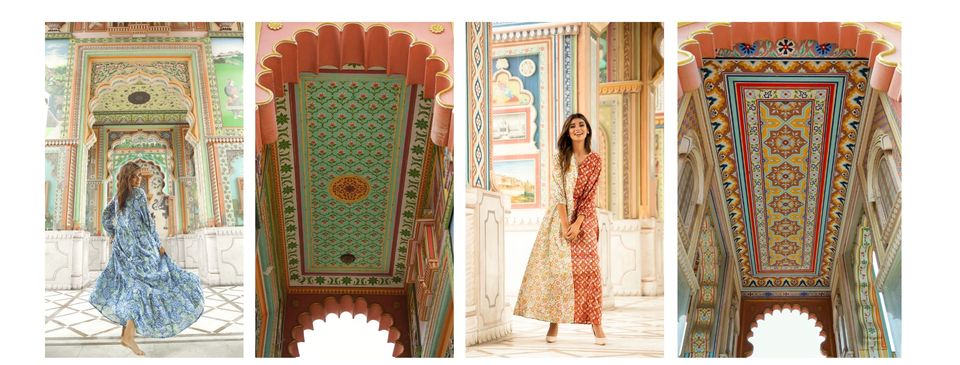
Kaftans, with their flowing silhouettes and vibrant patterns, have become synonymous with effortless elegance and timeless style. But beyond their fashionable appeal lies a rich history and cultural significance that spans centuries. Join us as we delve into the fascinating evolution of the kaftan, from its humble origins to its status as a global fashion staple.
Kaftan History:
The story of the kaftan begins centuries ago, with its origins tracing back to ancient Mesopotamia and the Middle East. Initially worn by men as a symbol of status and authority, the kaftan gradually evolved over time to become a unisex garment worn by both men and women across various cultures and regions. From the Ottoman Empire to North Africa, the kaftan became a symbol of luxury and sophistication, adorned with intricate embroidery, lavish fabrics, and ornate embellishments.
Evolution of Kaftans:
As trade routes expanded and cultures intermingled, the kaftan underwent further transformations, adapting to the customs and preferences of different societies. In Morocco, for example, the traditional djellaba evolved into the iconic Moroccan kaftan, characterized by its colorful fabrics, intricate embroidery, and flattering silhouette. Similarly, in India, the kaftan took on new forms and styles, incorporating elements of local craftsmanship and textile traditions.
Iconic Kaftan Styles:
Today, the kaftan is celebrated for its versatility and diversity, with countless variations and styles to suit every taste and occasion. From the classic Moroccan kaftan to the bohemian-inspired beach kaftan, there’s a kaftan style for every aesthetic and lifestyle. Whether you prefer bold, geometric prints or delicate, floral motifs, the options are endless when it comes to choosing the perfect kaftan for your wardrobe.
Tradeoffs and Challenges:
While the popularity of kaftans continues to soar, there are also challenges and tradeoffs associated with their mass production and commercialization. As demand for kaftans dresses increases, there is a risk of exploitation and unethical practices within the fashion industry, particularly in terms of labor rights and environmental sustainability. It’s important for consumers to be mindful of these issues and support brands that prioritize ethical and sustainable practices in their production processes.
The Impact of Kaftans:
Despite these challenges, the enduring popularity of kaftans speaks to their cultural significance and universal appeal. Beyond their aesthetic value, kaftans serve as symbols of cultural identity, tradition, and empowerment for many communities around the world. By embracing the kaftan as a fashion statement, individuals can celebrate diversity, honor tradition, and express their unique sense of style and identity.
Kaftans in Contemporary Fashion:
In recent years, kaftans have experienced a resurgence in popularity within the fashion world. Designers and fashion houses have reinterpreted this traditional garment, infusing it with modern twists and incorporating it into their collections. From high-end runways to everyday street style, kaftans have become a versatile wardrobe staple for fashion-forward individuals looking to make a statement with their attire.
Versatility and Adaptability:
One of the key reasons behind the enduring appeal of kaftans is their versatility and adaptability. Whether worn as a beach cover-up, a casual daytime ensemble, or an elegant evening gown, kaftans effortlessly transition between different settings and occasions. Their loose, flowing silhouette and breathable fabrics make them ideal for warm weather, while their intricate designs and embellishments add a touch of glamour to any outfit.
Cultural Appreciation vs. Appropriation:
As kaftans gain popularity in mainstream fashion, there is a fine line between cultural appreciation and appropriation that must be carefully navigated. While it’s wonderful to see diverse cultural influences being celebrated and incorporated into fashion, it’s essential to ensure that these influences are respected and honored in a meaningful way. This means acknowledging the cultural origins of the kaftan and giving credit to the communities and artisans who have preserved and perfected this garment over centuries.
Ethical and Sustainable Production:
Another challenge facing the kaftan industry is the need for ethical and sustainable production practices. As demand for kaftans grows, there is a risk of exploitation and environmental degradation within the supply chain. From sourcing ethical materials to ensuring fair labor practices, it’s crucial for brands and consumers alike to prioritize sustainability and social responsibility in the production and consumption of kaftans. By supporting brands that prioritize these values, individuals can make a positive impact on the fashion industry and contribute to a more sustainable future.
Empowerment and Self-Expression:
Despite these challenges, kaftans continue to empower individuals to express their unique sense of style and identity. Whether worn as a symbol of cultural pride, a fashion statement, or a form of self-expression, kaftans allow individuals to celebrate diversity and embrace their heritage while also embracing their individuality and authenticity. By wearing a kaftan, individuals can make a statement about who they are and what they stand for, creating a sense of empowerment and confidence that transcends fashion trends and societal norms.
The Future of Kaftans:
In conclusion, the future of kaftans is bright and promising, as they continue to inspire and captivate with their timeless elegance and cultural significance. From their ancient origins to their modern-day interpretations, kaftans remain a symbol of tradition, style, and individuality. By embracing the kaftan as a fashion staple, individuals can celebrate diversity, honor tradition, and express themselves authentically, creating a more inclusive and empowered fashion landscape for generations to come. So why not embrace the beauty and versatility of kaftans and make them a staple in your wardrobe today?








